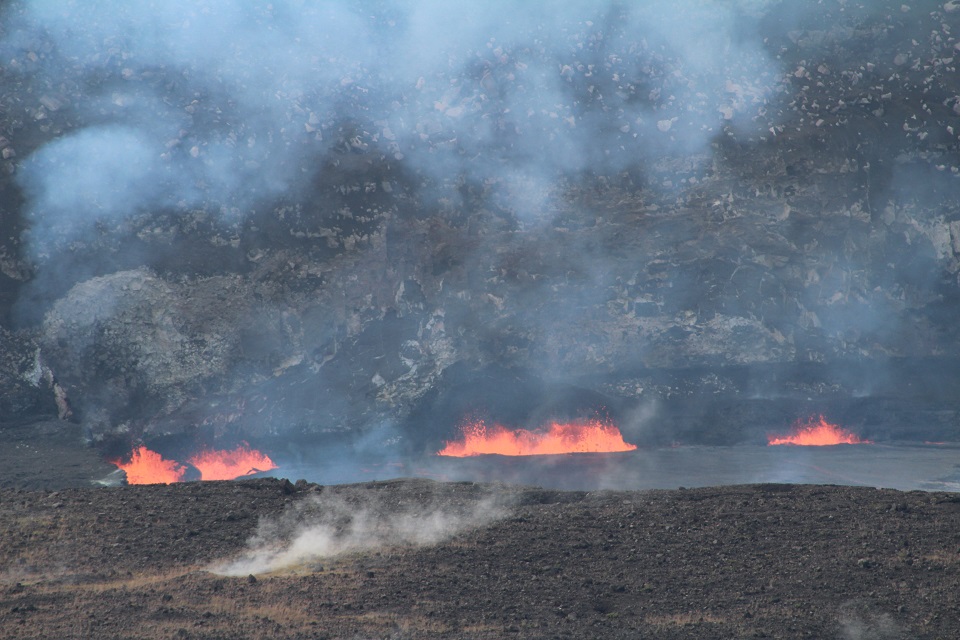|
You are viewing ARCHIVED content published online before January 20, 2025.
Please note that this content is NOT UPDATED, and links may not work. For current information,
visit https://www.nps.gov/aboutus/news/index.htm.

NPS Photo/Sami Steinkamp
Contact: Jessica Ferracane, 808-985-6018 Visitors and local residents gather nightly at the Jaggar Museum observation deck in Hawai‘i Volcanoes National Park to watch the lava lake spatter and glow within the summit crater of Kīlauea volcano, vying for the best parking spot and vantage point.The lava within Halema‘uma‘u Crater recently became visible for the first time since May 2015, and rangers have been busy directing vehicles at Jaggar Museum from 5 p.m. until well after dark, often sending people to park at Kīlauea Overlook, about 1/3 of a mile away. Park rangers share the following tips for an optimal viewing experience:
• Avoid the busy times, and visit the lava lake during the day. Or come after 9 p.m. The park is open 24 hours a day
• Be mindful of air quality. Hazardous volcanic gas and particulates can drift over the summit area in light or southerly winds. These gases are a danger to all, especially people with heart or respiratory problems, young children and pregnant women. Kīlauea Visitor Center offers updates on air quality 24 hours a day, and visitors can monitor the Hawai‘i SO2 network website
• Be prepared to hike a 1/3 of a mile each way between Kīlauea Overlook and Jaggar Museum on Crater Rim Trail. Wear sturdy closed-toe shoes, bring rain gear, water, binoculars, a flashlight, and extra batteries
• Carpool if possible to reduce the number of vehicles in the parking areas
• Ensure viewing for all. Don’t stand on the wall, and make room for wheelchairs
• Be quiet and listen to the vent for spattering and booming sounds
• Monitor the USGS Hawaiian Volcano Observatory (HVO) website and webcams. The KI camera provides a panoramic view of Halema‘uma‘u Crater from HVO, near Jaggar Museum. The tilt, shown on the deformation page, illustrates changes in magma supply into Kīlauea
In addition, air quality is poor at the coast where another eruption from Kīlauea enters the ocean at the Kamokuna site. Park rangers have roped off sections downwind of the ocean entry and have placed signs warning about toxic fume clouds which contain sulfur dioxide, volcanic particulates, and hydrochloric acid near the coast.
To stay upwind of the fumes, it is currently best to hike in from the County of Hawai‘i lava viewing area on the Kalapana side to access the ocean entry in the park. The Kalapana access is open daily from 3 p.m. to 9 p.m. It’s about a 4.2-mile hike from the Kalapana boundary to the ocean entry viewing point, one way, along the gravel emergency access road.
-NPS-

NPS Photo/J.Ferracane |
Last updated: September 14, 2016
